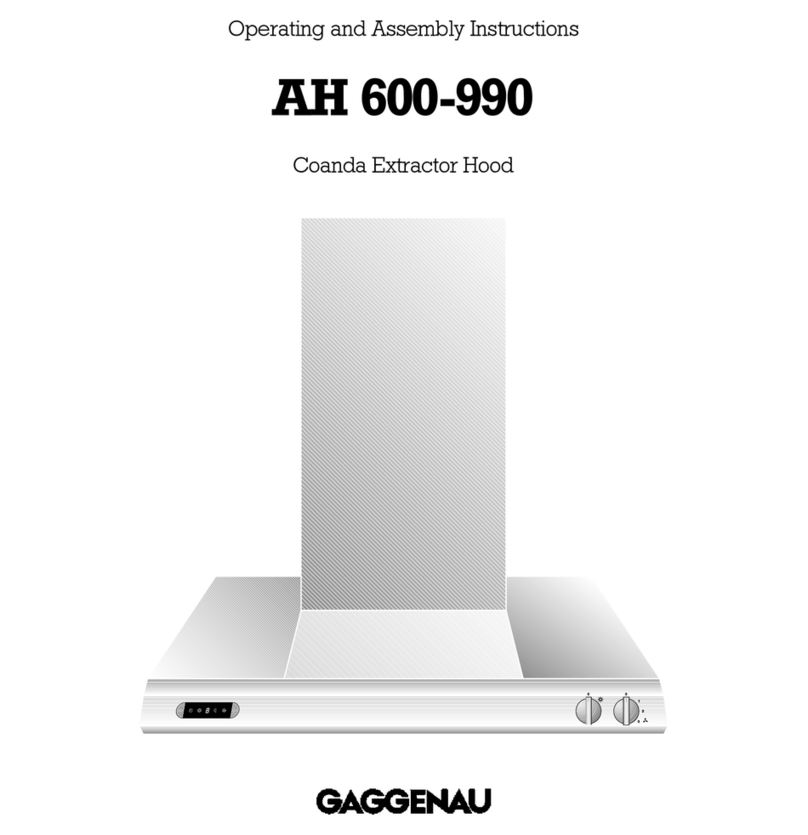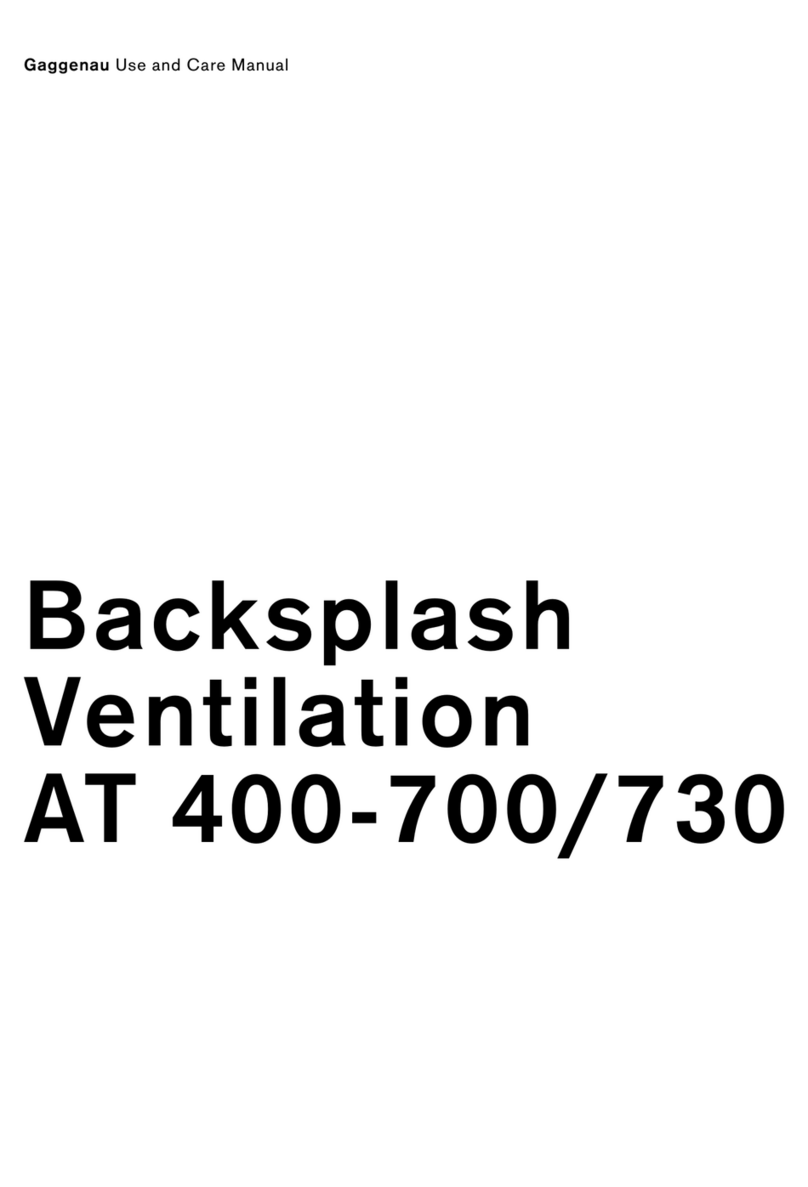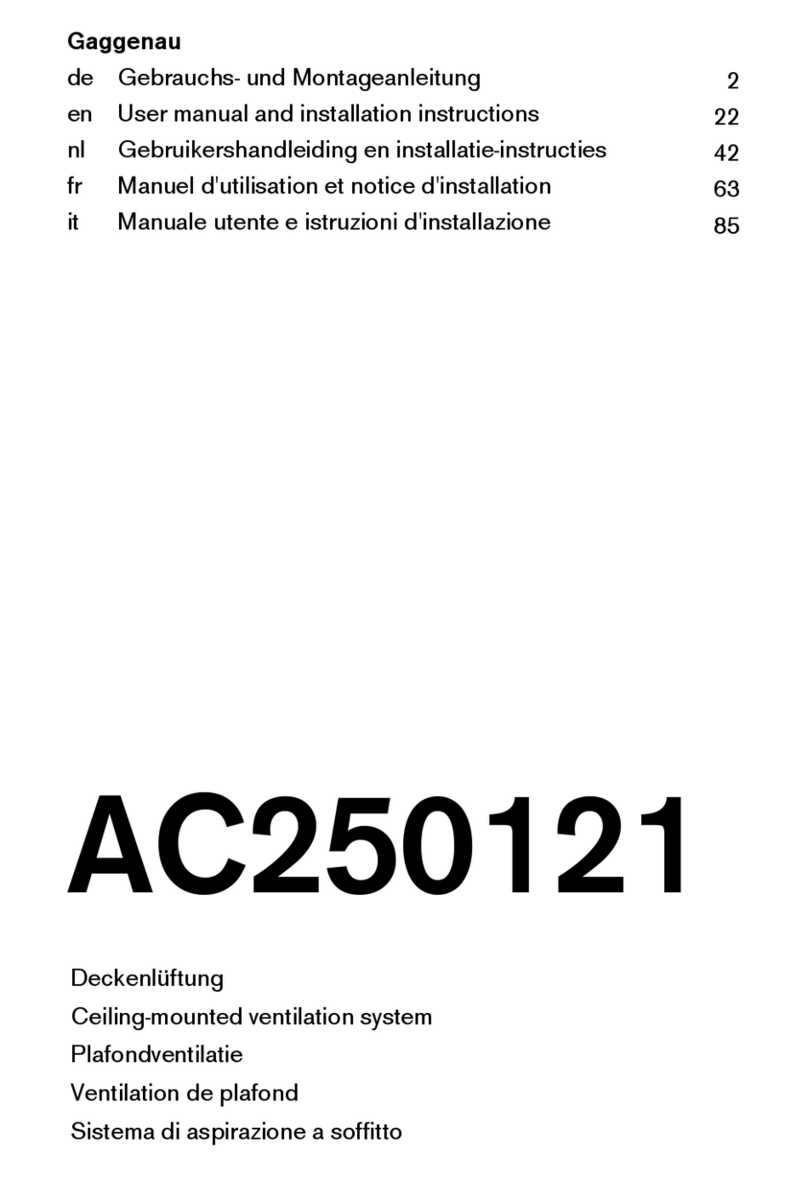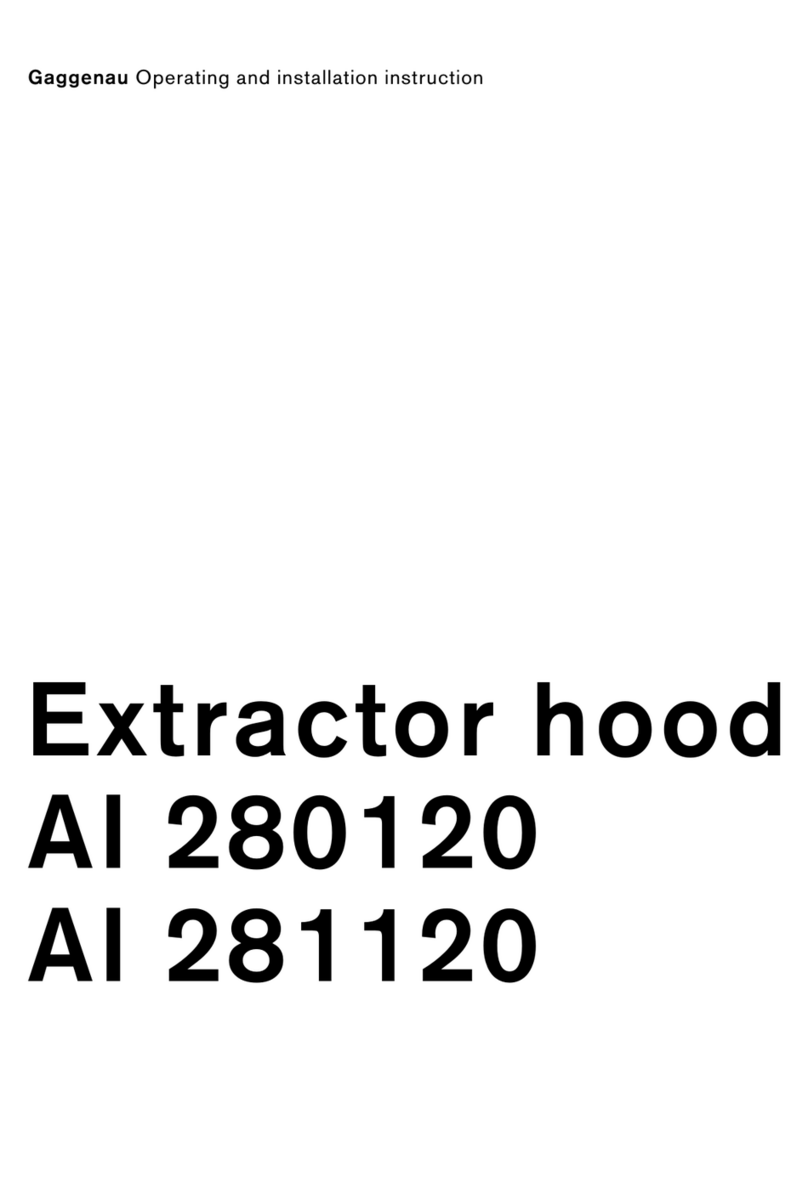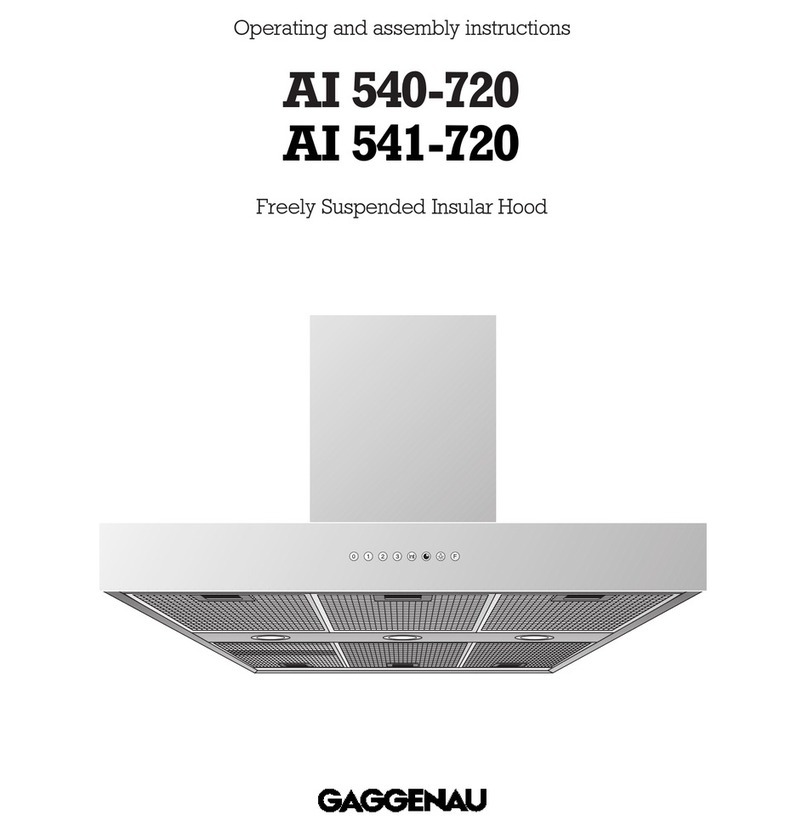6.2 Installation
W RNING - TO REDUCE THE RISK OF FIRE,
ELECTRIC SHOCK, OR INJURY TO PERSONS,
OBSERVE THE FOLLOWING:
a.) Installation work and electrical wiring must e
done y qualified person(s) in accordance with
all applica le codes and standards, including
fire-rated construction.
.) Sufficient air is needed for proper com ustion
end exhausting of gases through the flue
(chimney) of fuel urning equipment to prevent
ack drafting. Follow the heating equipment
manufacturer’s guideline and safety standards
such as those pu lished y the National Fire
Protection Association (NFPA), and the American
Society for Heating, Refrigeration and Air
Conditioning (ASHRAE), and the local code
authorities.
c.) When cutting or drilling into wall or ceiling, do
not damage electrical wiring and other hidden
utilities.
d.) Ducted fans must always e vented to the
outdoors.
e.) If this unit is to e installed over a tu or shower,
it must e marked as appropriate for the appli-
cation and e connected to a GFCI (Ground
Fault Circuit Interrupter) - protected ranch
circuit.
f.) NEVER place a switch where it can e reached
from a tu or shower.
W RNING:
To reduce the risk of fire, use only metal ductwork.
The applica le regulations of the energy supply
companies and the regional construction
regulations must e o served when installing
the hood.
The minimum distance from the worktop to the
ottom edge of the wall hood is for electrical
appliances 2510/16 ´´/ 650 mm and for gas appliances
30 ´ ´ / 762 mm.
The wall hood was conceived for the exhaust air
mode. The exhaust air can e routed into a
separate exhaust air shaft or directly into the open
through the outside wall.
It is not allowed to pass the exhaust air into a flue
or exhaust air chimney that is in operation or into a
shaft that is linked to the heating asement. Consult
the chimney sweep responsi le for your district
whenever you wish to pass the exhaust air into a
chimney that is not in operation.
During the course of planning, a chimney sweep
must e consulted if a room air-dependent hearth
is operated in the same room as the one in which a
hood is operated in the exhaust air mode. Adequate
incoming air must e ensured. The applica le
construction and safety regulations must e
o served.
Adequate incoming air must e ensured if a wood,
coal, gas or oil heater or an open hearth is operated
in the same room as the one in which the hood is
installed.
Safe operation is possi le whenever the partial
vacuum in the place where the firing equipment
is installed does not exceed 4 Pa (0.04 m ar).
This can e achieved whenever the air needed for
com ustion is a le to enter through openings that
cannot e sealed, for example in doors, windows,
incoming/exhaust air wall oxes or other technical
means.
14



















